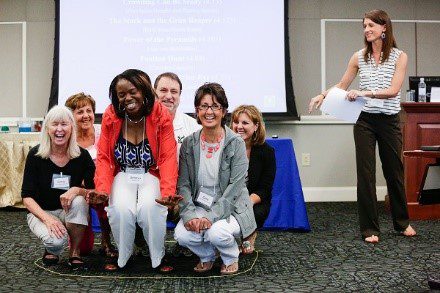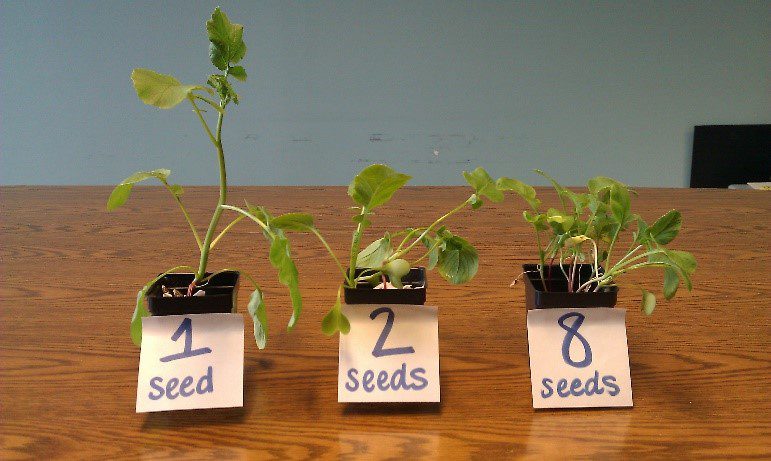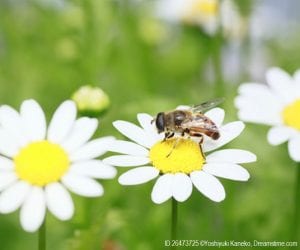Are you looking for an activity that meets all three pillars of the NGSS? In this blog I’ll explain how the elementary activity Crowding Can Be Seedy specifically meets the three NGSS pillars under the performance expectation for students to “plan and conduct an investigation to determine if plants need sunlight and water to grow.” (2-LS2-1)
The Three Pillars of the NGSS
The NGSS take content standards from traditional science education and intertwine them with three dimensions, or pillars, of science learning to better prepare students for STEM Careers. The three NGSS pillars are:

- Science and Engineering Practices – Specific practices such as developing models, or analyzing data. These real-world practices task students with conducting their own investigations and encourage them to think like scientists and engineers to solve problems.
- Disciplinary Core Ideas – Broad, fundamental ideas that are necessary for students to understand a given science discipline: physical sciences, life sciences, Earth and space sciences, and engineering, technology, and applications of science.
- Crosscutting Concepts – Concepts that bridge different disciplines and apply to all scientific areas. Crosscutting concepts include: patterns, cause and effect, systems, energy and matter, structure and function, and stability and change.
Crowding Can Be Seedy, An Activity Meeting the Three Pillars of NGSS
In the classroom activity Crowding Can Be Seedy, elementary students first simulate seeds sprouting together in a crowded flower pot, then plant real seeds in a gardening lab to determine how crowding makes a difference in their growth. The lesson is written for lower elementary grades but here we’ll focus specifically on the NGSS pillars for second grade.
NGSS Performance Expectation 2-LS2-1: Plan and conduct an investigation to determine if plants need sunlight and water to grow.
Science and Engineering Practices:
-

Developing and Using Models: Students develop a model of a flower pot, soil, sunlight, water, air, and seeds as they “plant” themselves inside the circle of yarn and “grow” while classmates recite a poem listing the resources needed by plants. As more “seeds” are planted each round, the model shows students that when too many seeds are planted in a limited space, resources like soil, water, sunlight, and space are unable to meet the needs of all the plants.
- Planning and carrying out investigations: Following the role-playing simulation, students work in cooperative groups to test how many seeds are ideal for growing radishes in a yogurt cup. Group 1 plants one seed in their cups, Group 2 plants four seeds in their cups, and group 3 plants eight seeds in their cups. Students collect data on the progress of their plants through observing, measuring, and sketching the growth of their radishes over the course of thirty days. Then, students harvest their radishes to compare the size and health of the vegetable between the three different groups and determine the optimal number of radishes to share limited resources.
Disciplinary Core Ideas:
- (LS2.A) Interdependent Relationships in Ecosystems
-
-

(2-LS2-1) Plants depend on water and light to grow: During the simulation, students recite a poem listing the resources that plants need to grow and discuss what happens when there is not enough water, sunlight, or soil for the amount of seeds in a flower pot. The gardening lab also demonstrates this core idea when students experiment planting different amounts of seeds with the same amount of water, sunlight, and soil.
-
Crosscutting Concepts:
- Cause and Effect: As more seeds are planted in the same container – both simulated and real – they compete for necessary resources and the overall health of all the plants declines.
NGSS-Aligned Lesson Has Students Thinking Like Scientists
The lesson plan Crowding Can Be Seedy is an example of how the NGSS encourage students to think like scientists and explore core ideas through modeling and experimenting in order to reach a conclusion or solution. And through its connections to all three dimensions of NGSS, this activity turns students from passive learners to active thinkers, and prepares them for STEM careers.
Image credit: Ravishing Radishes! by Kate Ter Haar is licensed under CC BY 2.0




